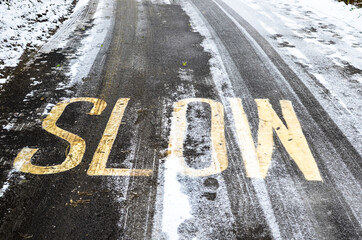
News
Recent California Supreme Court Opinion Emphasizes that Design Immunity
May 11, 2023
Recent California Supreme Court Opinion Emphasizes that Design Immunity May, But Does Not Always, Apply in Failure to Warn Dangerous Conditions Cases
Main Takeaway: Regardless of whether a condition was knowingly created as part of an approved design, such as the suspension of a bike lane for half a mile, public entities must provide a warning when they have notice that an approved road design presents a hidden or concealed danger to the public.
There are two different forms of dangerous conditions liability in California: (1) for creating the dangerous condition; and (2) for failing to “protect against” a dangerous condition that the entity had notice existed.[1] The first involves active conduct—creating something that’s dangerous. The second involves passive conduct—failing to act, such as by fixing the condition or warning the public about the condition and its potential danger.
However, the Government Code immunizes public entities from liability for a dangerous condition if the condition is a result of a defective design.[2] For design immunity to apply, the design must have been approved by the public entity before construction and there must be substantial evidence that the design was reasonable at the time. While design immunity is one of the most powerful defensive shields available to public entities, there are several limitations to it.
This article discusses just one of those limitations—application in failure to warn cases. On April 27, 2023, in Tansavatdi v. City of Rancho Palos Verdes,[3] the California Supreme Court reversed summary judgment in favor of the City of Rancho Palos Verdes; holding that design immunity did not apply where the public entity failed to warn of a design element that was dangerous where the public entity had notice of it. The City argued that a failure to warn claim can never be based on a condition knowingly created as part of an approved design. The Court rejected that argument and overruled any prior cases that held that a public entity can always assert design immunity in failure to warn cases when the dangerous condition was part of the approved design.
Tansavatdi involved a fatal bicyclist versus truck collision. The allegedly dangerous condition was the absence of a bike lane on a steep, half mile-long section of a roadway and the failure to warn that the bike lane temporarily stopped in that section. There, the cyclist was riding down the road in the section that did not have a bike lane while the road went past a community park. When the cyclist approached the intersection at the end of the non-bike lane section, he traveled in the right turn only lane but went straight through the intersection and collided with a truck turning in front of him (the truck driver believed the cyclist would turn right because he was in the right turn only lane). The City submitted substantial evidence that the road design, including the absence of a bike lane in order to provide parking for the community park, had been prepared by licensed traffic engineers and approved by the City.
The Supreme Court looked at whether design immunity always bars a dangerous condition claim based on the failure to warn of the condition when it was specifically approved as part of the design. In holding that design immunity does not always apply, the Court emphasized that design immunity was never intended to be an absolute defense in dangerous conditions cases. The Court turned to a related immunity for context in analyzing the issue. The Court explained that a failure to warn claim in the context of roads also needs to overcome signage immunity. Signage immunity bars claims that are based on failing to have a traffic or warning sign or signal unless necessary to warn of a hidden danger.[4] This is sometimes referred to as the “concealed trap” exception to signage immunity. The Court concluded that when signage immunity and design immunity are read together, a public entity could be liable where it failed to warn of a “concealed trap” even if it knowingly created that condition as part of an approved and reasonable design.[5]
Of course, to overcome these immunities (and ultimately prevail at trial) a plaintiff must still establish that the public entity had actual or constructive notice of the dangerous condition. The Court in Tansavatdi did not elaborate on notice issues because it was undisputed that the City had actual notice.
_____________________
[1] Gov’t Code § 835.
[2] Gov’t Code § 830.6.
[3] — P.3d —-, 2023 WL 3107312, Case No. S267453 (Apr. 27, 2023).
[4] Gov’t Code § 830.8.
[5] Note that the Court specifically refused to express a view on whether design immunity could apply where the presence or absence of signs was a considered element of the design because that issue was not before the Court.


